A ray of light falls normally on a rectangular glass slab.
Draw a ray diagram showing the path of the ray till it emerges out of the slab.
Step by step video & image solution for A ray of light falls normally on a rectangular glass slab. Draw a ray diagram showing the path of the ray till it emerges out of the slab. by Physics experts to help you in doubts & scoring excellent marks in Class 10 exams.
Updated on:21/07/2023Topper's Solved these Questions
- SELF ASSESSMENT PAPER -3BOOK - ICSECHAPTER - SELF ASSESSMENT PAPER -3EXERCISE - SECTION-A
31 Videos
- SELF ASSESSMENT PAPER -3BOOK - ICSECHAPTER - SELF ASSESSMENT PAPER -3EXERCISE - SECTION-B
42 Videos
- SELF ASSESSMENT PAPER -3BOOK - ICSECHAPTER - SELF ASSESSMENT PAPER -3EXERCISE - SECTION-B
42 Videos
- SELF ASSESSMENT PAPER -2BOOK - ICSECHAPTER - SELF ASSESSMENT PAPER -2EXERCISE - SECTION .B.
37 Videos
- SELF ASSESSMENT PAPER -5BOOK - ICSECHAPTER - SELF ASSESSMENT PAPER -5EXERCISE - SECTION-B
35 Videos
Similar Questions
A ray of light falls normally on a glass slab. Draw a diagram showing the path of the ray till it emerges out of the slab. What is the angle of incidence and angle of refraction at each surface of slab ?
View Solution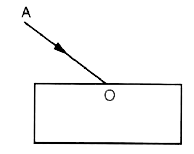
In the adjacent diagram, AO is a ray of light incident on a rectangular glass slab.
(a) Complete the path of the ray till it emerges out of the slab.
(b) In the diagram, mark the angle of incidence (i) and the angle of refraction (r) at the first interface. how is the refractive index of glass related to the angles i and r ?
(c) Mark angle of emergence by the letter e. how are the angles i and e related ?
(d) Which two rays are parallel to each other ? Name them
(e) Indicate in the diagram the lateral displacement between the emergent ray and the incident ray. state one factor that affects the lateral displacement.
View SolutionThe diagram alongside shows a light source P embedded in a rectangular glass block ABCD of critical angle 42∘. Complete the path of the ray PQ till it emerges out of the block. [Write necessary angles.]
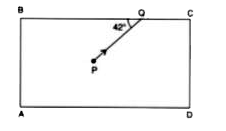
View SolutionA ray of light falls on a normally on a refracting face of a prism. Find the angle of prism if the ray just fails to emerge from the prism (μ=3/2).
View SolutionA ray of light falls normally on a rectangular glass slab.
Draw a ray diagram showing the path of the ray till it emerges out of the slab.
View SolutionIn the diagram below, PQ is a ray of light incident on a rectangular glass block.
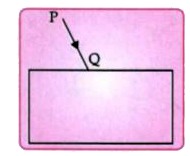
Copy the diagram and complete the path of the ray of light through the glass block. In your diagram, mark the angle of incidence by letter 'i' and the angle of emergence by the letter 'e'.
View SolutionFigure shows two identical prisms P and Q placed with their faces parallel to each other. A light ray AB of yellow colour is incident at the face of the prism P. Complete the diagram to show the path of the ray till it emerges out of the prism Q.
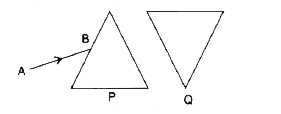
View Solution
A ray of light enters a glass slab ABCD as shown in figure and strikes at the centre O of the circular parth AC of the slab. The critical angle of glass is 42∘. Complete the path of the ray till it emerges out from the slab. mark the angles in the diagram wherever necessary.
View SolutionFigure below shows two identical prisms A and B placed with their faces parallel to each other. A ray of light of single colour PQ is incident at the face of the prism A. complete the diagram to show the path of the ray till it emerges out of the prism B.
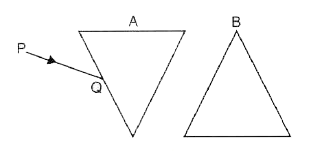
View SolutionA light ray falls on a rectangular glass slab as shown. The index of refraction of the glass, if total internal reflection is to occur at the vertical face, is
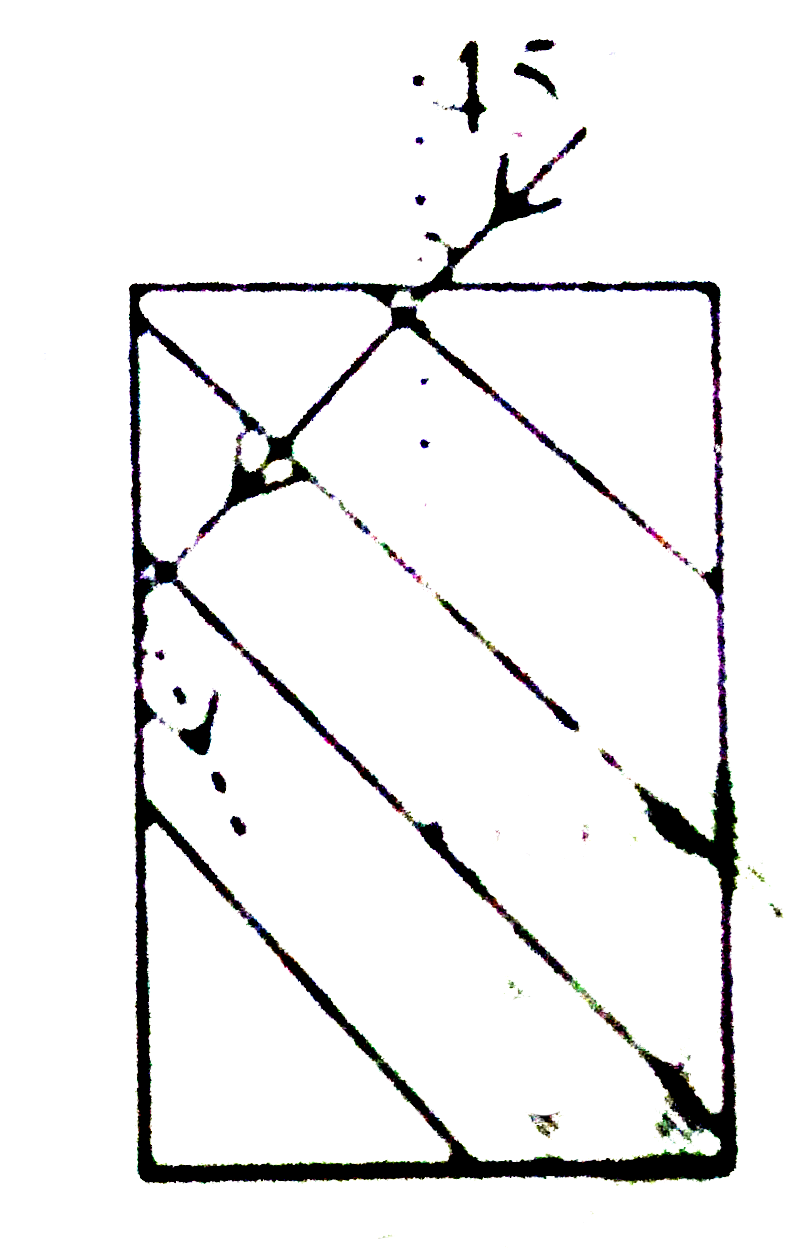
View Solution
